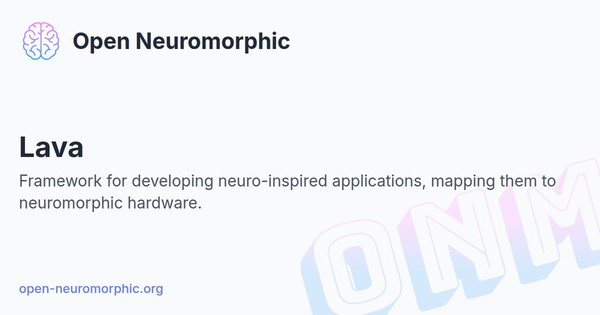Overview
Lava is an open-source software framework designed for neuromorphic computing, aiming to develop neuro-inspired applications and their mapping to neuromophic hardware.
Developed and maintained by the Intel Neuromorphic Computing Team, Lava offers developers and researchers tools and abstractions to develop applications that fully utilize the benefits of neural computation. Additionally, it provides neuromorphic hardware to intelligently learn from and respond to real-world data with great gains in energy efficiency and speed.
While its specific alignment with neuromorphic hardware can be a limitation for those who lack access to such resources, Lava boasts many interesting features and capabilities due to this alignment. The library offers a modular structure for integrating algorithms and supports a wide variety of neuron models, network topologies, and training tools. This makes the project highly flexible and versatile, enabling users to define individual neurons, neural networks, interfaces to third-party devices, and compatibility to other software frameworks.
Furthermore, Lava is platform-agnostic, meaning it can run on any combination of operating systems and underlying architectures. This allows for prototyping on different CPUs/GPUs and deployment on various neuromorphic chips. Lava’s standout features include hyper-granular parallelism, functions and tools for building dynamic neural networks, forward connectivity to link multiple neural network models, and a focus on high energy efficiency and speed. As a comprehensive and innovative library with a focus on advanced research, Lava is a valuable tool for exploring the intersection of neuroscience and hardware engineering.





